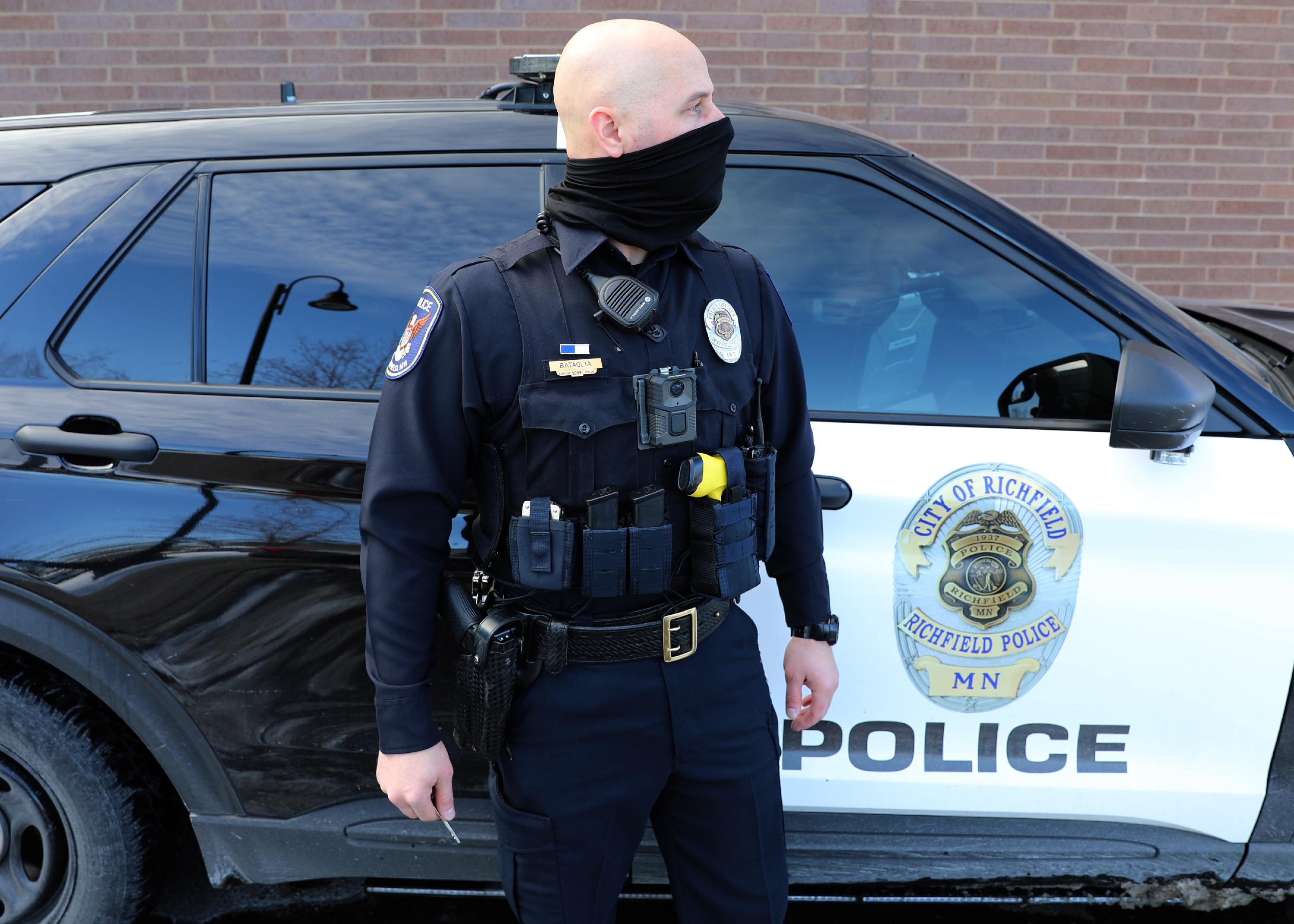RPD officers now equipped with body cameras

Police body cameras are a way to enhance public safety and build trust between law enforcement and the community it serves. On January 25, the Richfield Police Department (RPD) announced the full rollout of its new body camera program.
The body cameras selected by the RPD are the Motorola WatchGuard V300. Each camera weighs 6.8 ounces and will predominantly be worn at the center of an officer’s chest.
These cameras are recording during the entirety of the officer’s shift and then retained by the department’s new police data and media specialist.
The retention length of the recorded video content depends on the type of interaction an officer is having with a member of the public. For infractions, such as traffic stops, the data will remain on file for two years. Interactions that lead to a case number being assigned will be held for three years.
The process to integrate body cameras into the day-to-day operations of the Richfield police force started in 2018.
“There are a wide variety of body camera styles and data storage options available in the public safety marketplace,” explained Police Chief Jay Henthorne. “From start to finish we wanted to make sure we adopted a body camera system that met the needs of the residents we protect and serve. Resident input was very important in our decision making process.”
Prior to implementation, the department conducted a survey, hosted a public meeting, participated in a city council hearing and held numerous informal conversations with residents about the subject of body cameras.
“Body cameras are showing tremendous promise for improving public safety, as well as increasing transparency and accountability,” said Deputy Police Chief Mike Flaherty. “Our new cameras synchronize with our squad cameras increasing the likelihood that any incident is captured from multiple camera perspectives.”
The initial cost of the new equipment came in at $195,000 with an additional cloud-based storage expense starting in 2024 at the cost of approximately $70,000 a year. Plus, the addition of a staff member to maintain and retain the officers’ recorded content.
In the weeks leading up to body cameras being issued to all officers, each member of the force needed to complete three trainings. The first demonstrated the use of the new device, the second showed them how to use the cloud-based storage system, and the third involved reviewing the department’s body-worn camera policy.
Furthermore, body-worn cameras will be used for documenting evidence, officer training, strengthening police transparency, improving officer performance and accountability.
“As a department, transparency is one of our core values,” stated Henthorne. “Body cameras will heighten our level of transparency with residents by providing a video record of police activity and help resolve questions following an encounter between our officers and members of the public. Our officers have requested body cameras for a number of years but we wanted to make sure we did it right. Through research, testing, and implementation, we feel we have.”
 Request Data
Request Data Contacts
Contacts Employees
Employees Language
Language 
